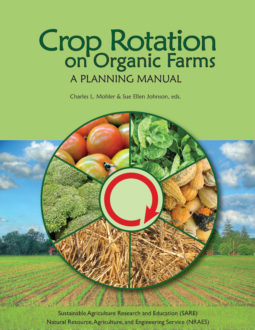The effects of intercropping on pest species vary, depending on the specific behaviors and life cycles of the beneficial insects. Many parasitoids are limited to a narrow range of insect hosts. Some of these use plant odors or visual cues to locate their hosts by first finding the plants on which the hosts are located. In those cases, intercropping can interfere with host finding by the beneficial parasitoids (99).
For the intercrop to increase the numbers of beneficial insects, it should provide the beneficials with an important resource, such as pollen, nectar, alternate prey, shelter, or overwintering sites. Organic growers often plant buckwheat, alyssum, and other flowering plants as sources of nectar and pollen for beneficials. Corn and other grasses also produce large quantities of pollen. Many major groups of beneficial insects—including predators such as lacewings, lady beetles, minute pirate bugs, and hover flies, as well as parasitoids and pollinators—feed on pollen or nectar. But beware: So do many pests, including tarnished plant bug and imported cabbageworm butterflies. One way to evaluate “insectary plantings” is to look at both the pests and the beneficials attracted by the flowers and evaluate the beneficial/pest ratio (64).
Alternate food or prey, shelter, and overwintering sites can be important in building up a buffer of generalist insect predators to prevent chance colonization of the field from turning into a major outbreak. Some generalist predators, like spiders, ground beetles, and rove beetles, typically have only one or two generations per year and are not highly mobile; so they need steady food sources and undisturbed vegetation nearby to colonize the field when pests arrive. For example, grass strips between fields provide overwintering sites for ground beetles, which colonize adjacent fields during the growing season.
